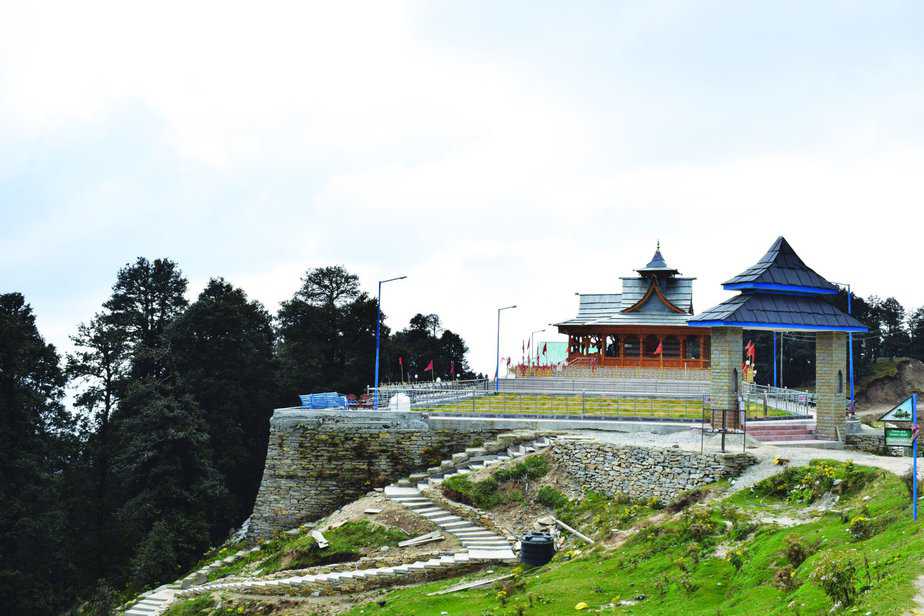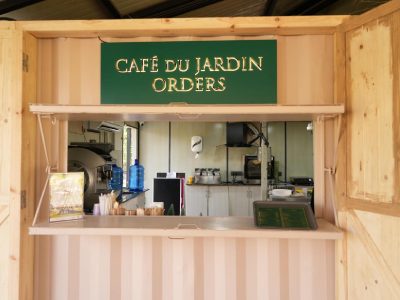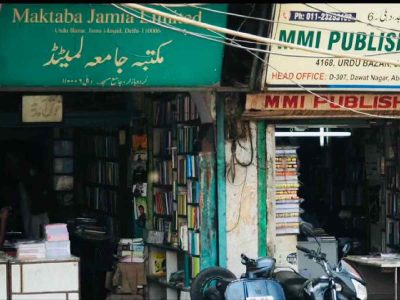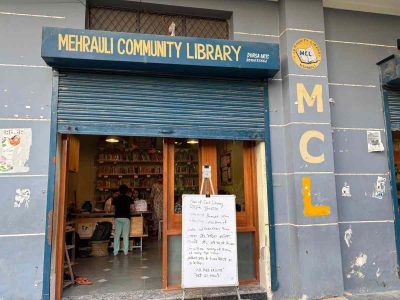Smiling faces, apple orchards, Bhima’s rock stove, high-altitude hockey turf–the hill town of Mashobra melts hearts and lifts spirits
I was in paradise. No horns, no rush, just bright flowers and rolling green mountains. The sweet fragrance of fresh air urged me to keep my balcony door open, but “There are monkeys around and they create havoc with open doors,” warns young Pratibha, who works with Marigold Sarovar Portico and is my guide during my two-day stay in this blissful hill town. Just 15 km from the hectic and popular hill station Shimla, Mashobra is less known but well worth a visit.
After the tiring drive from Kalka to Mashobra, the rays dancing on treetops and glistening peaks raised my spirits. Dipping biscuits in the hot tea, feet on the table, an eye out for the monkey on the roof, I let Nature soothe my tired nerves. The sun was going down, the birds were going home too; the big black crow gave one loud caw and disappeared. I regretted not having brought my binoculars to this birding paradise.
A native of Himachal Pradesh, Pratibha’s innocent smile and love for the mountains was contagious. Unlike the city’s hardened souls, she talked freely about her family in the village and the apple orchards they owned. She was the only one who had a job, and enjoyed learning the ways of the world. Mashobra’s beauty and calm was a respite from the concrete jungle.
Drive to Hatu
While Manoj Dev, the hotel’s general manager, asked my preference for places to see, Pradeep, the man who drove me around and was a native of the nearby town of Narkanda, insisted on taking me to Hatu temple. “My native village is about an hour’s trek from the famous Devi temple,” he smiled. Thankfully, we were a little far and would drive: my city limbs weren’t in the mood for a trek.
We could have taken a horse ride in Kufri, or see the views from Fagu, or driven past the golf course in Naldhera. However, we chose to turn the car on the curvy road to Narkanda. This little hilly place is a famous winter skiing destination. We had to climb higher for Hatu peak, the second highest peak in that region at 3,400 m (11,200 ft). And that was some drive, lined with conifers, oaks and deodars.
The narrow road could take only one car at a time; I was told that this was jam-packed during a festival held in the Hindu month of Jyestha (May 20-June 21) in honour of the goddess. But lady luck gave us a smooth drive. No other vehicle crossed us and the trees kept swaying, as if heralding our arrival. The clouds seemed to like us too and greeted us with a light shower as we parked the car in this surreal place. The rolling mountains in the distance were actually dense forests, but from where I stood the panorama was ethereal.
Sitting on a ledge, Pradeep pointed out two rocks in the distance. “That is Bhima’s chulha (stove). He sat on the mountains that you see in the distance and cooked food,” says Pradeep. The skeptical city dweller in me looked at him and questioned, “How did he cook from that distance?”
“He had been given a boon that he could change his shape and size. The Pandavas were in ‘agyat vaas’ (the year when they had to remain undercover),” pat came the response. Going back to Mahabharat, the Pandavas had lost their kingdom to the Kauravas in a game of chausar. They had spent 12 years in wilderness and agyat vaas was the 13th year. The dense forests and tough mountains were their hideout. I was imagining a gigantic man stirring the food with a huge ladle, keeping his eyes and ears open for the enemy. Pointing to a board, I asked Pradeep where the trek in the forest led. But we needed a guide for that. Hastily gobbling some namkeen, we walked towards the wooden structure in the distance where Hatu mata lived.
Going closer, I saw dragons carved in the wooden temple structure. The priest said that some workers were influenced by Buddhism; hence the architecture and carvings had a Buddhist feel. A lady was praying loudly to the Devi—a form of Kali mata. “She protects us from all evil and natural calamities,” the young priest elucidates. Apparently, the original temple was destroyed in a cyclone many years back. Wikipedia says it was a temple dedicated to Mandodri, Ravana’s wife. It didn’t matter what the real story was, for the silence and beauty was a blessing to carry in your heart for many weeks. On the first Sunday of Jyestha, the temple bells would ring non-stop as villagers arrived for the Devi’s blessings. I was also shown a spot where goat sacrifices are done.
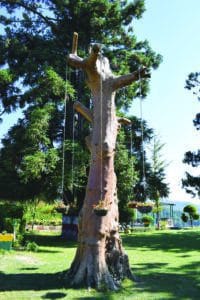
Apples and games
The dark clouds were floating away. On the way down, Pradeep showed me a suicide spot, from where the drop was steep. Back on the road, Pradeep stopped some friends who were carrying fresh apples in their trucks and picked a few for me—red and sweet. This was fruit country—the mountains were laden with apple trees, he said, and everyone worked in the orchards.
After about an hour, he stopped on the side and pointed down. It was the village of Shilaroo and I saw a high-altitude astro-turf hockey stadium right at the edge of a mountain. Constructed by the Indian Hockey Association in 2010, this synthetic turf stadium cost over Rs 3.5 crore and was built after the association realised that India was lagging behind in the sport due to lack of upgraded techniques and infrastructure. The turf lies in the premises of Netaji Subhash High Altitude Training Centre, which is under the Sports Authority of India, where there are facilities for other games too.
Bounty preserved
You can get to know more about apples and see daffodils, hyacinths, and oak and pine trees at Craignano, I was told. Fifteen minutes later, I was walking into the Regional Horticultural Research and Training Station. The only visible human being was sitting at the ticket counter. A small museum cum conference room housed barks, dried apples, insects which damaged fruit trees and all the possible information on apples that one could find. Outside, the sunshine, the manicured garden and the lack of activity put me in a meditative state, jolted to reality when Pratibha pointed out a radio tower in the distance.
Way back in 1887, Alexander Coutts, a tailor to the then Viceroy of India Lord Dufferin, had planted apples, plums, pears, roses and exotic plants here. He named it ‘Hillock’s Head’, sometime later it came to be known as ‘Coutt’s Garden’. In 1953, this became a research station on fruits under the department of agriculture. And then in December 1985, it came under Dr YS Parmar University of Horticulture and Forestry.

